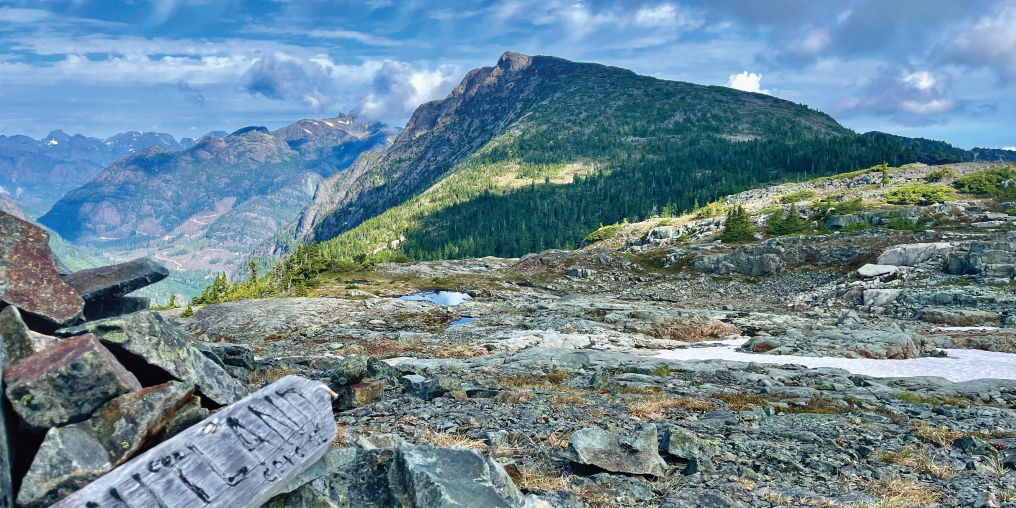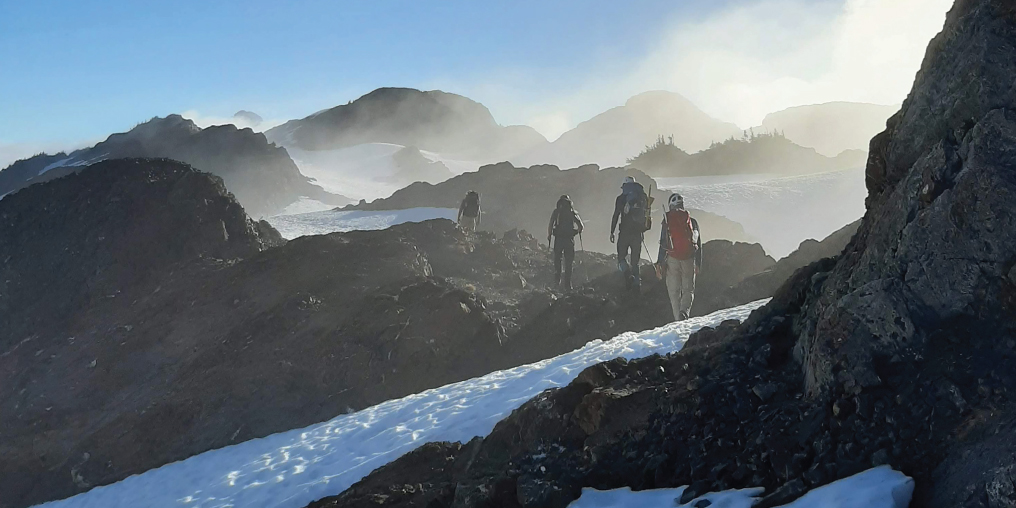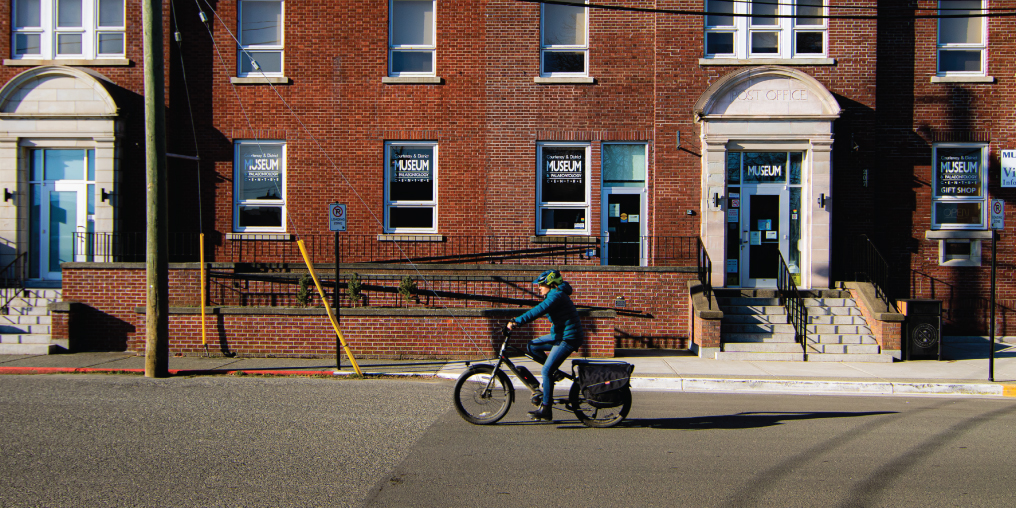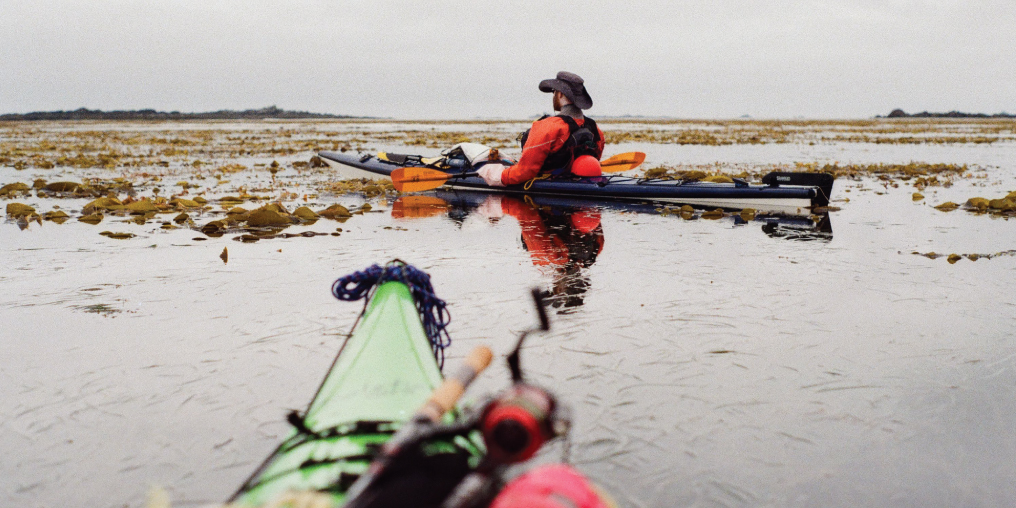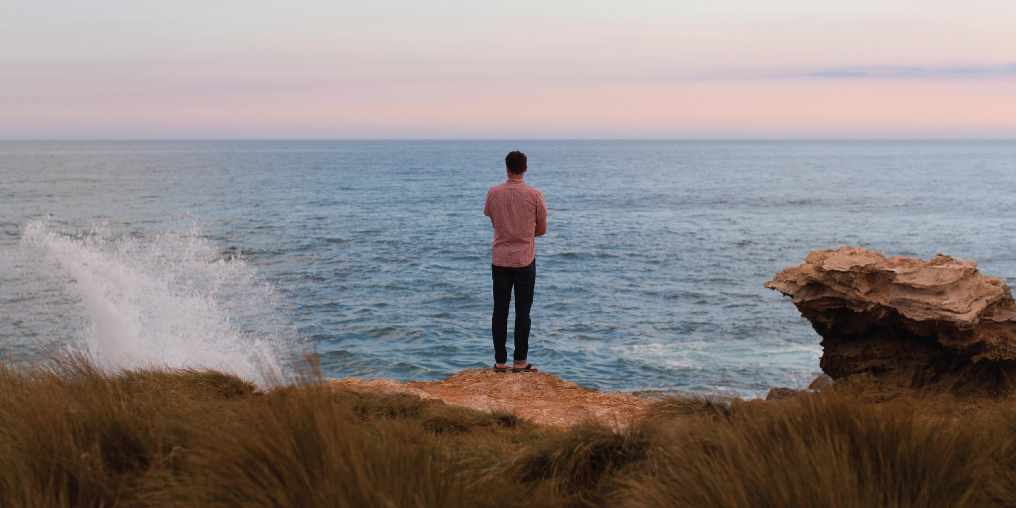Terry Lewis sits in his home office, staring at a computer screen displaying a GIS map that’s a spider’s web of logging roads and contour lines. A reflective vest hangs on the back of his chair. On the couch is a red backpack, packed and ready as if Lewis were about to grab a chainsaw, load up his pickup truck, and head out to do some trail maintenance.
Except it’s snowing—hard. Already, three centimetres coat the steep driveway of his Valleyview Drive home.
So Lewis is left to gaze at a thin line that weaves across the screen—the digital representation of the Vancouver Island Trail he’s been working on for over a decade—and ponder all the time-consuming, tedious little details that still need attention before anyone can say this project is complete.
Measuring roughly 800 km from Victoria to Cape Scott, this epic hike cuts through a cross-section of land use designations with a uniquely Vancouver Island complexity. There’s unceded First Nations territory; private land managed by Mosaic Forest Management on behalf of TimberWest and Island Timberlands; provincial Crown land doled out to Western Forest Products in the form of tree farm licenses; provincial parks; and regional districts.
“I probably spend about a thousand hours a year on this. It’s basically like a full-time job,” says Lewis, a spry 77-year-old with a PhD in soil science (he’s been called “the dirt doctor”).
Lewis holds the position of director of operations on the nine-member board of the Vancouver Island Trail Association. It’s a lofty-sounding title—shorthand for a doggedly determined individual. Lewis, along with a core group of about 20 other dedicated volunteers, is responsible for removing blowdown from the trail, pumping out press releases, meeting with landowners, and many other tasks on a lengthy to-do list. This all gets done on a skeletal annual budget of around $20,000, largely collected from individual donations. Most of the money goes to covering gas costs and other travel expenses for volunteers.
A decade ago, Lewis hadn’t even heard of the trail. At that time, he was deeply involved in a retirement passion project building mountain bike trails as part of the River Rats. (To anyone familiar with Thirsty Beaver, Switchback, and many other classic Cumberland trails, the River Rats need no further introduction.)
For many years, Lewis was also an avid trail runner and co-organizer of the Perseverance Trail Run. At the 2012 event, he noticed a tent with an intriguing sign. He wandered over and met Gil Parker, a well-travelled Victoria-based businessman, adventurer, and mountaineer, who was in Cumberland hoping to raise awareness and recruit volunteers for something called the Vancouver Island Spine Trail.
In 2006, after completing the 4,200 km Pacific Crest Trail from British Columbia to Mexico over a five-year period, Parker dreamed of creating a similar trail on Vancouver Island. He’d been beavering away on it in relative obscurity ever since; it had become his retirement obsession. After Lewis met Parker and learned of the project, it became his as well.
“As soon as I heard about the trail, I was on board,” Lewis says.
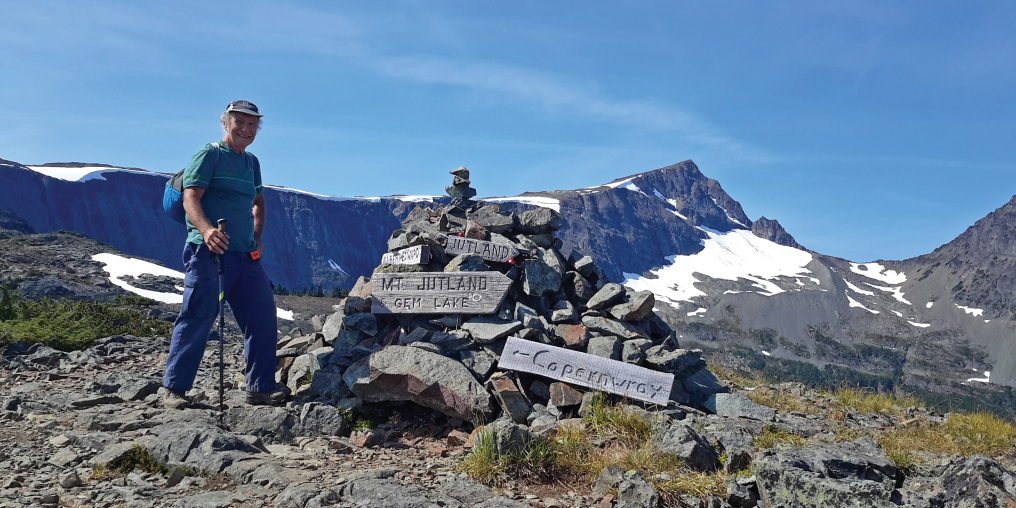
He dove in feet first. Lewis brought to the project a passion for trail building, but also useful contacts with land managers and foresters accrued over decades of working as a forest industry consultant. He liked Parker’s concept of using established trails as much as possible, and building link-ups where necessary. There would be no sculpting of dirt as with a River Rats project, just removal of brush and windfall. Orange reflective markers would be tacked onto trees to mark the route.
A few years ago, the trail association decided on a name change.
“Some people thought the name ‘Spine Trail’ implied that it was a technical route going over the tops of mountains,” Lewis explains. “It’s meant to be a physical challenge but not technical, something that anybody can do.”
So it became, simply, the Vancouver Island Trail. In 2018 Isobel Glover, then a 20-year-old University of Victoria student, became the first person to hike the entire route in a single big effort. It took her two months of walking, fuelled by a daily one-kilogram diet of food.
“The thing about living on Vancouver Island, and in BC, is you walk a few paces and nature is right there. You don’t need to go anywhere special. It’s all right here,” Glover told Times Colonist writer Jack Knox not long after finishing the trek in late August 2018.
Lewis estimates that between 15 and 20 people do the entire trail every year, but those are only the trekkers he knows about.
On paper, the trail is complete. But Lewis says there remains much work to do on the administrative side of the equation. The ʼNa̱mǥis First Nation, though it welcomes recreation and tourism on its territory, says it doesn’t have the capacity to deal with the trail. Therefore, there’s a blank section on the trail where it passes through the Nimpkish Valley. Further south, negotiations are still underway for a formal access agreement with Mosaic Forest Management, but talks move at a glacial pace. So does an application with the provincial government to get Section 57 status for parts of the trail (an official designation that falls under the Forest and Range Practices Act).
In many ways, the Vancouver Island Trail remains a beast of an undertaking, both for adventurers who want to hike it and for folks like Lewis and Gil Parker, who dream of a day when it will be complete.
At age 86, and suffering from Parkinson’s disease, Parker says he’s already spent “far too much time” on the trail and has nothing left to give. Lewis is healthy but says new blood is desperately needed to carry the project forward, to keep conversations going with landowners and managers—not to mention clearing blowdown from the 250 kilometres of trail outside provincial parks.
“I’m 77 and most of our volunteers are in their 60s and 70s. We are in serious need of younger volunteers or clubs that might want to adopt sections of trail,” Lewis says. “We also know, from experience, that without regular maintenance the trail will virtually disappear in only three to five years.”
People come from around the world to hike the iconic Appalachian Trail and Pacific Crest Trail, and, increasingly, the 180-kilometre-long Sunshine Coast Trail. Vancouver Island has one in the making, but, like Lewis says, it needs an injection of youthful energy to take it across the finish line. Without that injection, nature will surely reclaim what has taken more than 15 years to build.

